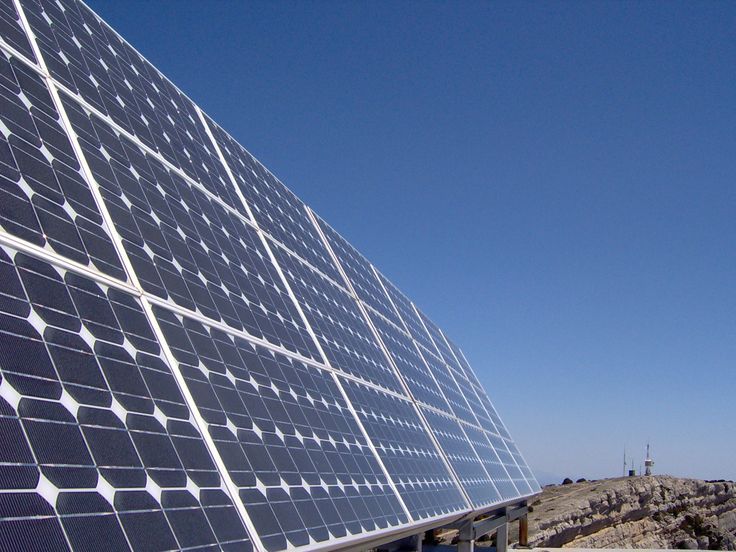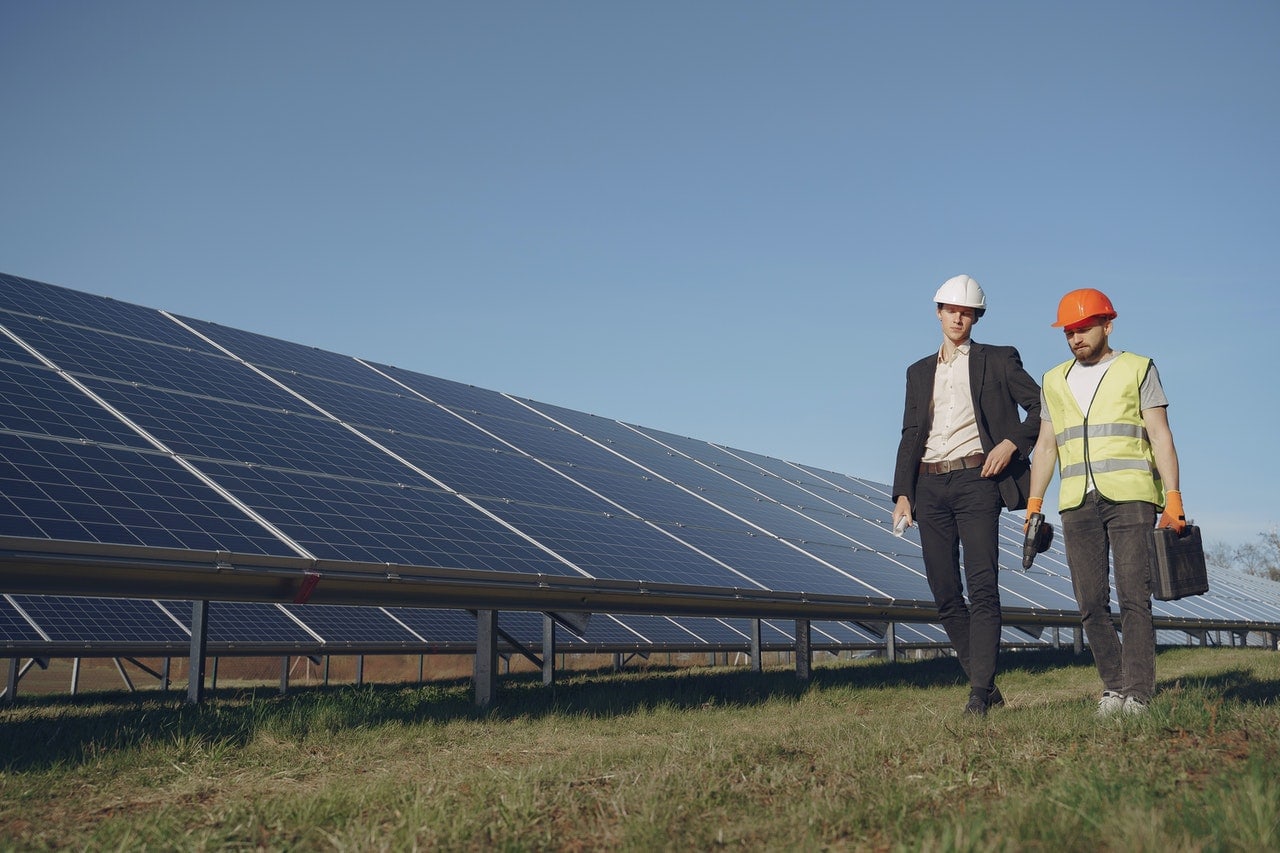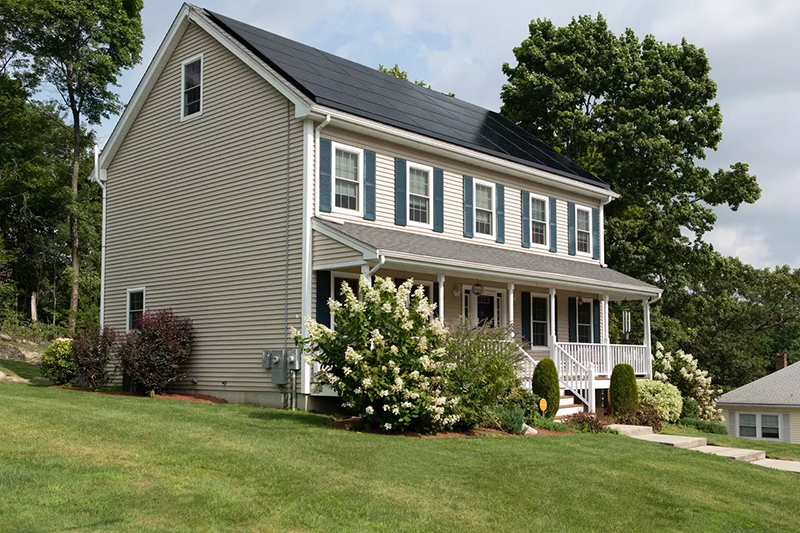Transportation
Solar-Powered Vehicles
A more realistic possibility to traditional cars are solar-powered vehicles. With a surface area of five square meters with 10,000 solar cells built in to the glass roof and hood of the car respectively,Eindhoven-based company Lightyear claims its first all-electric model is capable traveling up to an impressive estimated range as per NEDC cycle. It features a photovoltaic right sourced out of Kia's sunroof and hood in order to recharge some on-board battery pack throughout driving. In California, Aptera Motors is working on a solar powered three wheeler that claims up to 1000 miles of range combining electric drive with power directly from the sun.Solar Trains and Subways
Solarizing Public Transportation Services To start with, Indian Railways has introduced a solar powered train for the first time which will have PV Solar panels fitted on its roof to generate electricity. The systems consist of 72 standard polysilicon panels that generate about 7,200 kWh of electricity per year or roughly the equivalent to your average household's annual diesel fuel consumption and subsequent CO2 production. Delhi Metro Rail Corporation (DMRC) has also set up roof top solar panel plants at...urations of 20 MW and is catering to almost 60% of their daily electricity consumption in daylight hours.Solar Airplane Technology Evolves
Solar The aircraft is a good example of how far solar aviation has come This solar-powered aircraft, piloted by and successfully circumnavigated the world without a drop of fuel. It uses more than 17,000 solar cells to store energy during the day so that it can fly through night. The success of the aircraft showcases how powerful solar energy can be as a way to make aviation friendlier toward our environment.Solar Buses
Many cities in the world are embracing solar buses as part of their public transport fleets. Take China's BYD, which stands for 'Build Your Dreams' - the outfit has developed electric buses with solar panels mounted on their roofs. The solar panels generate a little extra juice to extend the buses' range, which is between 200 and 250 miles on a single charge. For instance, the Chinese city of Shenzhen has already adopted electric public transport on a large scale and now operates more than 16,000 EV buses.Solar Ferries
Unlike petrol-driven vessels and with zero emissions, solar ferries offer sustainable alternatives for water transport. Photo credit: Solar Impulse FoundationSolar powered catamaran ferry, the solarcat in Norway Powered by 60 kW of solar panels, this utilitarian vessel can transport up to 120 passengers. This operates on fjords and lakes, offering a silent diesel-electric battery hybrid which yields zero emissions.Battery Charging
Solar Phone Chargers
If you constantly feel like your device is running out of battery, a solar phone charger might be just what you are looking for. Companies such as Anker sell solar chargers that can generate anywhere from 5 to about 20 watts, which is enough power to charge smartphones, tablets and other small electronics. The Anker PowerPort Solar Lite, for instance, comes with 15 watts worth of power and high-efficiency panels that can charge an iPhone in just a couple hours. These are chargers made for portable use, and as such have a slimmed down form factor that is usually collapsible to pack.
Best Laptop and Tablet Solar Chargers
Goal Zero and RAVPower have portable solar chargers for larger devices like laptops and tablets. Goal Zero Nomad 20 Solar Panel, $149.95: At up to 20 watts output, this folding solar panel delivers enough power for the next laptop or tablet owner during outdoor activities -- such as surfing protests on the beach (check GCN blog), pee little yellow with ranger Rick.. With a built-in USB and 12V port, this charger allows users to charge more than one device at once. Another great option is the RAVPower 100W Foldable Solar Panel which has high output and compatibility with many devices to keep your systems operational wherever you go.
Solar-Powered Power Banks
Traditional power banks are recreated with solar panels, making it capable to store the whole charge and keep up for several days. The Solar Power Bank from Blavor has a 20,000 mAh battery and dual solar panels capable of recharging in roughly 40 hours under direct sunlight. In addition, this power bank has multiple charging ports with including USB-C and micro-USB to charge different type of devices. X-Dragon also makes a 24,000 mAh solar power bank with quicker charging and the capability to offer various charges on popular smartphones and tablets.
Smart Device Integration
Feature-fold Solar Charging Integration with Smart devicesSubset 2 The integration of solar charging along smart devices are increasing. Also notable is the solar capability of products like this one from Garmin and a similar watch design feature with smaller cells found in Casio models, allowing for indefinite use under sunlight. Take Garmin's Instinct Solar — it last up to 54 days in smartwatch mode alone (depends on the usage). This is essential for keeping devices running all day long (which comes in handy if you are an outdoors person).
Outdoor and Emergency Applications
During outdoor activities and emergencies, solar battery chargers are quite advantageous. BigBlue 28W Solar ChargerBest for: Hiking, campingPrice: $$$This weatherproof solar charger is able to deliver power from the sun thanks its massive surface area of monocrystalline silicon panels that actually look kind of cool. At this level, it can produce up to 28 watts of power, which is sufficient for you while charging multiple devices at the same time. Jackery solar generators are powerful enough to act as emergency backup power enabling you to keep the lights on, run small appliances (mini fridge or TV most) and safely charge medical devices by providing greater capacity during emergencies. For example, the Jackery Explorer 1000 can provide a significant amount of power with its 1000Wh battery and has an input for solar panels which make it valuable during natural disasters or when at remote locations.
Heating
Solar Water Heaters
Solar Water Heaters : This is the best way to utilize solar energy for water heating. Solar water heaters powered by solar collectors that absorb sunlight are available through Rheem and Bosch Depending on the size and climate of your system, these systems can supply up to 80% of hot water for a home. This can help to offset the daily demand for 50-100 gallons of hot water the average home creates which cuts into potentially high utility bills used by electric or gas powered styles.
Solar Space Heaters
Solar space heaters allow for you to heat indoor spaces using solar energy directly. Solar Air Heater by Solar Infra Systems - Courtesy of Solar Infra Systems Available in models and colours to suit every interior, these heaters can heat up 1,000 square feet for a cheap and eco-friendly form of sustainable heating. Their effectiveness is also based on sunlight exposure and insulation but can lower your heating bill up to 30% - 50%.
Passive solar heating homes
Passive solar heating involves using natural sunlight for nature of building designing. This design includes architectural features such as lots of south-facing windows, thermal mass (materials that store heat), and good insulation. These designs are supported by the Passive House Institute US (PHIUS), and can lower a building's heating energy use 90%. Such buildings at Georgia Tech range from the Kendeda Building for Innovative Sustainable Design, which relies on passive solar heating to cool and heat interior spaces without conventional HVAC systems.
Solar Thermal Collectors
Solar thermal collectors harness the sun energy to heat air or fluid, and are used in both residential and commercial settings. The collectors, designed by companies such as Viessmann and Heliodyne can be system installed in pitched rooftops or empty spaces. Depending on climate, a typical house can supplement about 3,000-8,000 gallons of hot water per year with solar heating and million or so BTU's (British thermal units) for home heat. For large buildings and industrial processes, these systems can save many heating costs in commercial applications.
Solar Pool Heating
A solar pool heating system is an example of this type and extend the swimming season in any part of the world that has a moderate to hot climate. The SunHeater System by FAFCO and similar systems employ solar collectors to move pool water through and garner free heat from the sun. They can heat pools 10-15 degrees warmer - perfect if you live in place with mild weather. With an average lifespan of up to 20 years and very low running costs, solar pool heaters are a sustainable -not expensive-way of heating your swimming all year round.
Lighting
Solar Garden & Pathway Lights
Solar garden lights and solar pathway lights are great for providing light (without the need to increase electricity bill) on outdoors. Solar lights from brands like GardenBliss and Gigalumi are capable of all that, holding onto a bit solar power during the day so they can light up gardens or pathways at night. They usually give a service life of 8 to10 hours per full charge. For instance, the GardenBliss Solar Pathway Lights are sold in a set of 10 and each provide up to 10 lumens for light which makes it great to illuminate pathways as well keep you safe outdoors.
Solar Street Lights
Solar Street Lights are the new and impressive entry in street lights that ensures to enhances public lighting anywhere in the world plus reduce energy costs. The biggest names in the field are Philips and Cree, delivering off-grid lights. Philips SunStay solar street lights, for example, combine flat panels with lithium-ion battery storage to produce up 5.800 lumens and provide approximately 12 hours of illumination on full charge Motion sensors and timers come standard on these lights as well delivering energy efficiency and reduced maintenance.
Indoor Community Lighting Solutions
These include indoor solar lighting systems that capture and spread sunlight with the help of tubular skylights. Solatube makes some of the most advanced natural-lighting systems in the world, where numbers between 1 and 99 can light up an area to nearly a whopping (yes) +2k square feet. With new, patented optical technologies coming to the Solatube Brighten Up Series for commercial spaces as well in 2016 that will consistently provide pure, natural daylight into interiors throughout most of any day (even on partly cloudy days) - significantly decreasing reliance on electric light during daytime hours. Especially useful in spaces with no direct access to windows (hallways, bathroom etc)..
Solar-Powered Lanterns
With Outdoor Activities Or Emergency Situations, Solar-Powered Lanterns Are An Essential. There are companies like LuminAID and Goal Zero that offer lanterns which you can charge by the sun.parseLong_. The LuminAID PackLite Max offers 150 lumens of light and up to 50 hours running time on a single charge. They are easy to carry, foldable and water-resistant hence they perfect for camping hiking and emergency essentials.
Solar Lanterns for the Third World
Solar lighting is saving lives and improving lifestyles in many emerging economies, providing a reliable, inexpensive source of light. Solar Lanterns and Home Lighting SystemsDeployment in off -grid by organization like Liter of Light, SolarAid For example, the SM100 solar light produced by SolarAid are only $5 and provide up to 10 hours of light per charge which would substantially improve a family's life over dangerous kerosene lamp use. This is of the upmost important as it can provide clean renewable energy for education, safety and allow buildings to have other economic developments.
Electricity Generation
Residential Solar Panels
Home solar panels are cheaper, better That is changing now as residential solar systems become more affordable and efficient. Panel efficiency: Up to 22.8% (e.g., SunPower and LG Solar) For that, an average 5-kilowatt (kW) residential solar system produces between 20-25 kWh per day - which itself is a fair amount of power for a standalone home. These systems are available with 25+ year warranties and offer long-term advantages as well. For example - a SunPower Equinox can save homeowners as much $30,000 in electricity bills over 25 years.
Commercial Solar Power System
Commercial solar PV systems are used by businesses to lower their operating costs and get more sustainable in the process. Runtime: SolarCity and First Solar can install multi-megawatt (MW) solar arrays. One such person noted that Apple's headquarters in Cupertino, California has a 17 MW solar installation on site that supplies nearly three-quarters of the campus' energy use. Solar Carports | Rooftop Installation - The use of solar carports and rooftop installations, which are available within residential ENVISION complex commercial systems such as the RES 25 kWh can help in making an efficient utilization of space to generate more energy.
Utility-Scale Solar Farms
Power supply for the grid: Utility-scale solar farms produce heaps of electricity. While in California, the Topaz Solar Farm also has a 550 MW capacity providing electricity to as many as 180 people shaking hands every year. They are essentially huge swathes of photovoltaic panels covering vast areas. Noor Abu Dhabi, meanwhile in the United Arab Emirates (UAE) is also a stand out project with 1.17 GW of capacity as one of the largest single-site solar power plants globally able to supply energy equivalent for 90,000 homes and decrease CO2 emissions by more than million metric tons each year
Off-Grid Solar Solutions
Providing electricity to far-off areas that are not connected with the national grid using off-grid solar solutions. Solar panels, batteries and an inverter will all be available from OutBack Power or Renogy for installs into houses that purely run renewable connected systems. In areas that regular infrastructure is missing, these frameworks are very crucial. The Solar Electric Light Fund (SELF) installed off-grid solar systems in several African villages, allowing schools and clinics to stay open without worrying about the power cutting out midway through a surgery. An average off-grid system can produce about 5 to 15 kWh of electricity daily, depending on the configuration and geographical location.
Solar-Powered Microgrids
Solar thermal power stations convert sunlight into steam through the use of a system of heating water for electricity generation. Events in disaster-prone regions are where such a system would be particularly beneficial with reliability concerns about an aging grid. In California, such facilities include the Stone Edge Farm Microgrid; it features both solar panels and upscaled lithium-ion battery storage as well as other backup generators that can produce and store enough energy to support farm operations during outages. A microgrid like this can generate one megawatt of power, enough to keep the electricity running when there's an event on the electric grid.



